Possibly the most controversial vessels built by the United States during WWII, the Alaska class were unique ships, somewhere between a battleship and a traditional cruiser. This hybrid status has led many to dub them battlecrusiers, although this is a reading that does not hold up in view of the history of that ship type. Instead, the role and design history of the Alaskas is best summarized by their official designation as Large Cruisers.12
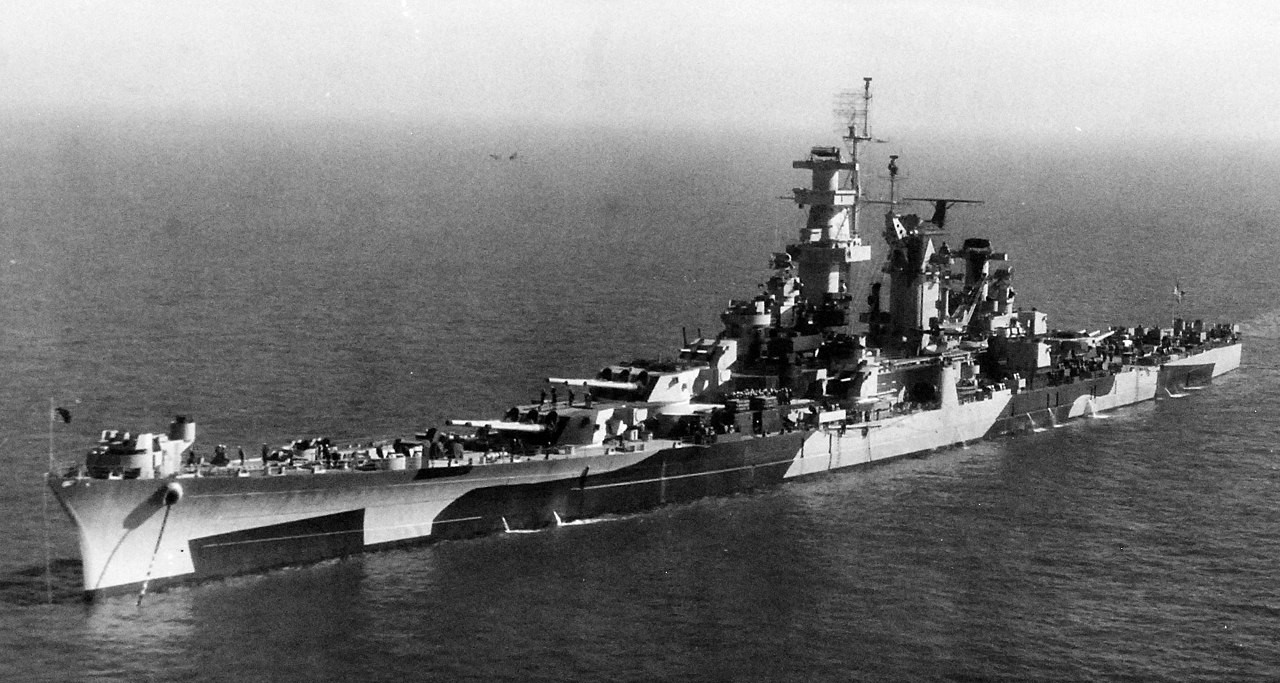
Alaska
The Alaska class was the result of the 1936 London Treaty. The idea of a "cruiser-killer", capable of hunting down treaty cruisers but lighter and cheaper than a battleship, had long been attractive to the various navies. However, none had acted on it because of the treaties. Anything above the treaty limits for cruisers would have come out of battleship tonnage allocations, and nobody was willing to sacrifice full-size battleships to get cruiser-killers, even at a reasonably favorable exchange rate.3 The French came closest with the Dunkerque class, which was a moderately specialized design primarily intended to hunt the Deutschland class Panzerschiffe, but even these were essentially downsized battleships, with the design features and roles that implied. But after the Second London Treaty, with all restrictions on total fleet size abandoned, the USN decided the concept was worth a second look.
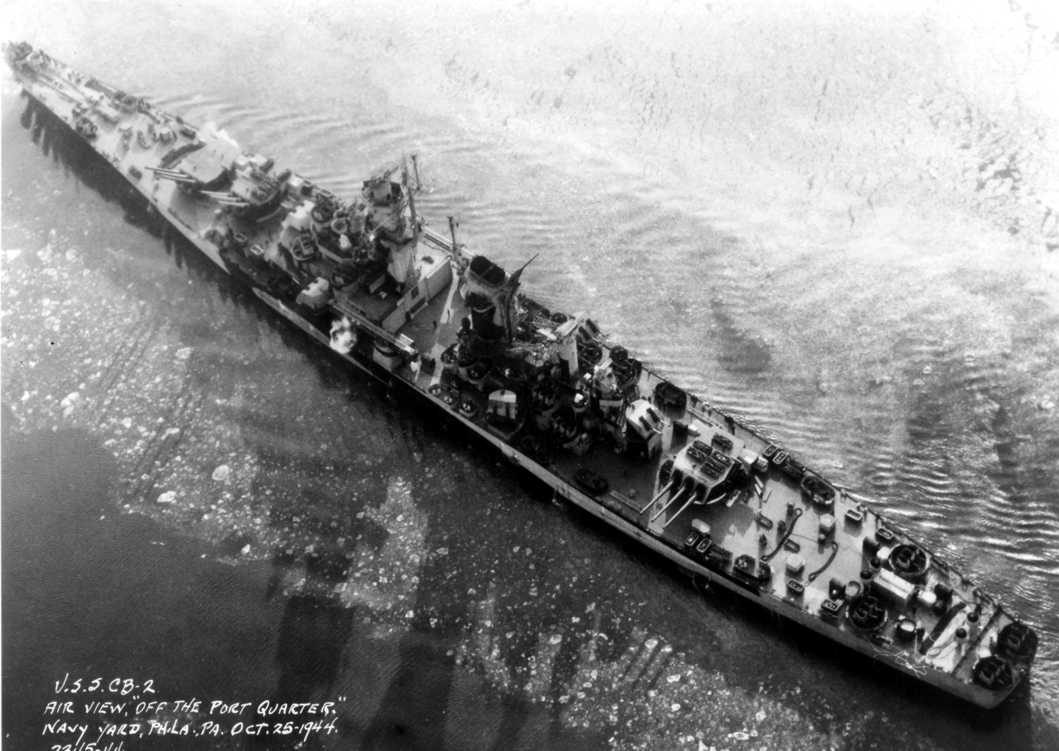
Guam
The Japanese had invested heavily in their cruiser force, and although the USN had increased the speed of its new battleships to allow them to screen the carriers, there was serious concern that the ships would be tied down with the battle line and unavailable to either protect the carriers or hunt cruisers raiding the fleet's supply lines. In 1938, when these discussions started, this made some degree of sense, as the ability of aircraft to sink battleships at sea was still an open question. By the time Repulse and Prince of Wales had been sunk and the question more or less resolved, the program was well underway.
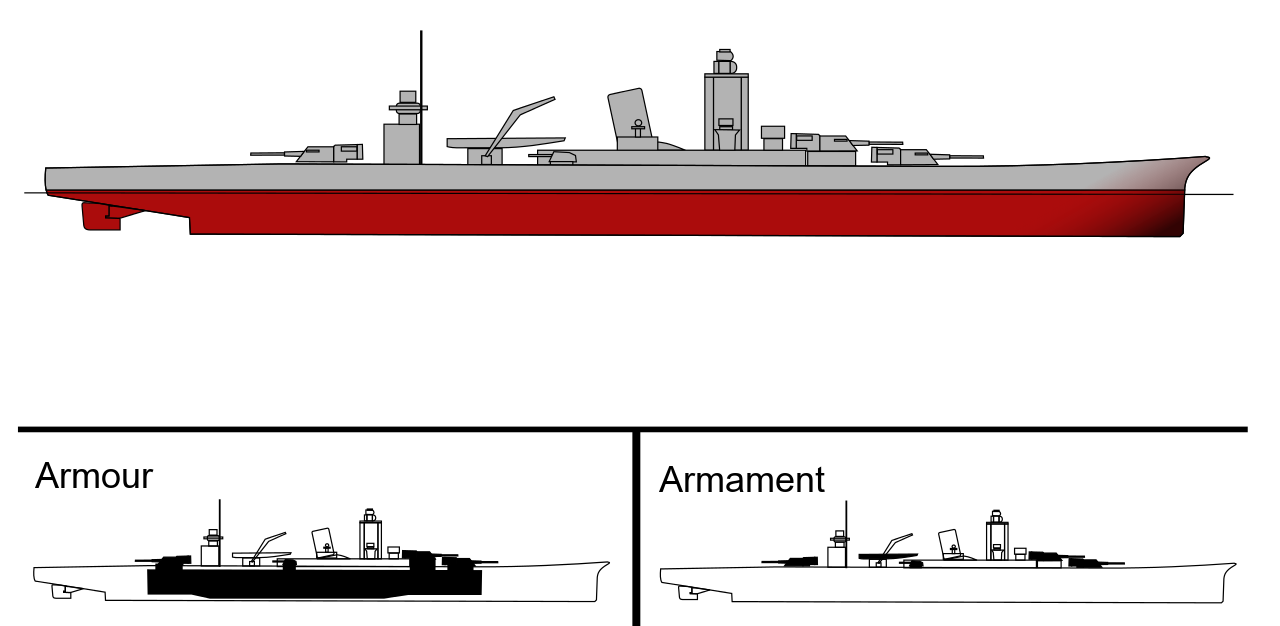
A sketch of the proposed Japanese B-65 design
The first sketches were of ships armed with 6 12" guns or 12 8" guns, each carrying 7 twin 5" turrets and armored against 12" guns, presumably to protect against any Japanese attempts to build similar ships. Despite the heavy armament, these were definitely cruisers, designed primarily for independent operations instead of service with the fleet. Their airplanes were in hangars amidships, where they were protected not only from the weather but also from the gun blast.4 They also had a triple torpedo tube mount on each beam, intended for use if they found themselves in a short-range low-visibility engagement. The result was a group of ships between 22,000 and 24,000 tons, capable of 35 kts and with an immune zone against an 8" gun of something like 10 kyrds-30 kyrds. It was soon noticed that replacing the twin 12" turrets with triples wouldn't give a major increase in displacement, and the change was quickly implemented.
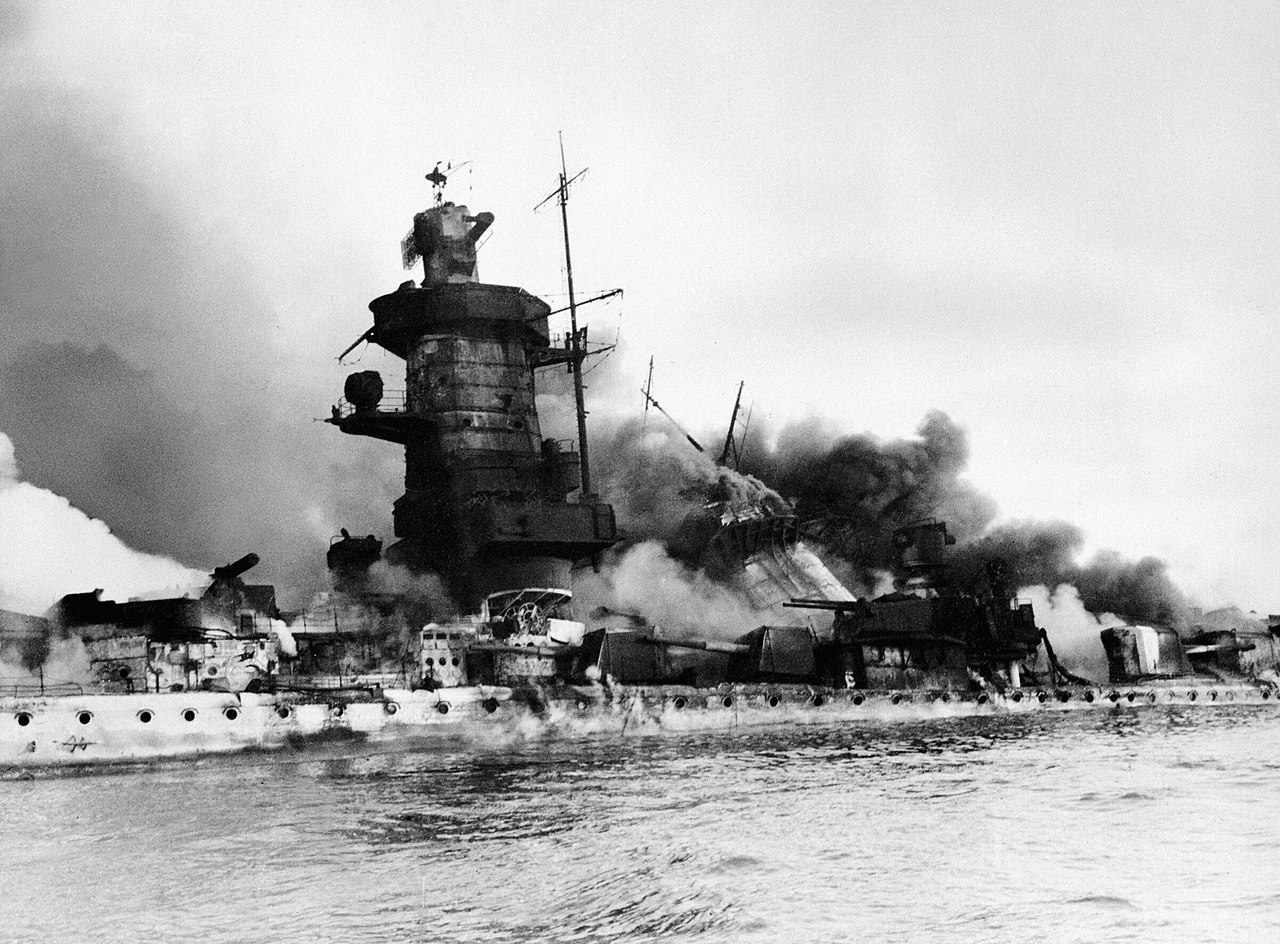
Graf Spee, scuttled after the Battle of the River Plate
The cruise of the Graf Spee served to emphasize the need for vessels of this type to its supporters, among them Ernest J. King, who would later be Chief of Naval Operations during the war. There was enough interest for the Bureau of Ordnance to begin work on a new 12"/50 gun, which, thanks to the development of super-heavy shells and improved metallurgy could match the performance of the 14" guns used on many of the older US battleships.5 The concept prompted considerable dissent within the Navy, as many officers thought the ships would be white elephants, their proposed role better filled by either conventional heavy cruisers or the new fast battleships currently being designed. One particular sticking point was the risk of triggering a building race in the new ships, under the theory that it would make the existing heavy cruisers obsolete. As usual, this was a rather silly theory, and the Japanese were actively planning similar ships, although none were actually built.
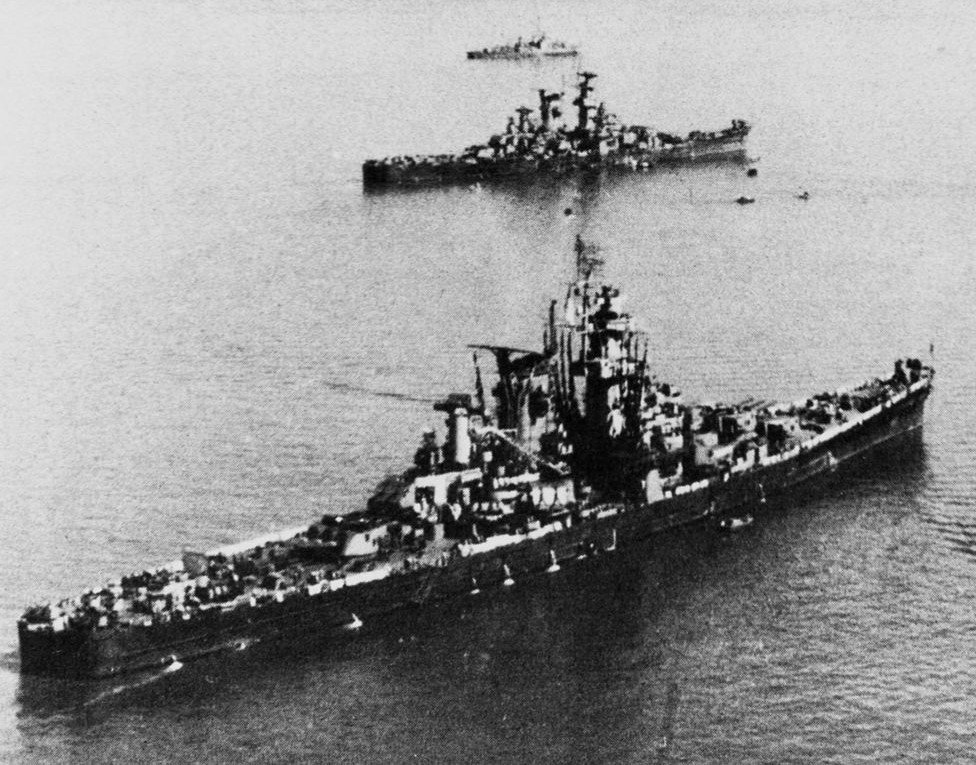
Guam and Alaska (background) off the Chinese coast after the Japanese surrender
But as complicated as the pre-history of the design was, things were only going to get worse when serious design studies began. It turned out that producing a ship that actually made sense, with a reasonable balance of size/cost and technical characteristics, would prove exceptionally difficult. In the end, they would pull it off, but only two ships were actually completed, with a third stillborn. We'll take a look at the evolution of the Alaska design, one of the most complicated of the era, next time.6
1 One thing that is commonly used to buttress the "battlecruiser" reading is the hull code of CB. In fact, the USN was using B to mean "large", as seen on the Midway class CVBs. The only true USN battlecruisers, the Lexingtons, had been designated CC. Do note that I'm going to cover the battlecruiser issue in detail in Part 2, and I'd appreciate holding the discussion on it until then. ⇑
2 I've since taken a closer look at the issue of classification of these ships. While "Large Cruiser" is still an accurate description for the Alaskas themselves, I think "cruiser killer" is more apt for the broader type. ⇑
3 Note that this exchange rate couldn't have been better than 2:1, because the Second London Treaty imposed a lower limit of 17,500 tons and 10" guns on capital ships, to prevent heavier cruisers being classified as capital ships. A strong argument could be made that two of these ships would have been more useful in practice than a battleship in WWII as actually fought, but given what they knew at the time, nobody was willing to take that risk, and it's not particularly reasonable to criticize them for their reluctance. ⇑
4 Note that American battleships had their airplanes aft, with no hangars. The thinking was that the battle line as a whole had enough aircraft that any losses could be absorbed. ⇑
5 Interestingly, because only 10 triple turrets of this type were built (three each of Alaska, Guam and Hawaii, plus one spare) they were the most expensive heavy guns ever purchased by the USN. ⇑
6 I do find it rather ironic that I first had to split a class design post on the Alaskas, but they really do have an unusually complex story. ⇑

Comments
By technical specs the Alaska class the actually built Japanese ships they're closest to seem to be the Kongos (assuming the 305 mm Superheavy shell can match a 356 mm normal shell).
That's not wrong. But the Kongos were towards the absolute minimum for an effective battleship by 1942, as evidenced by how roughly they got handed at Guadalcanal.
Whether the Kongos are BBs or BCs makes a big difference in the "number of times Battleships squared off."
Though so does what you call HMS Hood.
One of your articles on the Aegis ships (I think?) notes that by their specs, some of the ships were built "to the destroyer book" and not to cruiser specs. Same for the Alaskas, I assume?
@Ian
Particularly during WWII, I treat battlecruisers and battleships as roughly equivalent. The Kongos were built as BCs, but heavily refitted in the 30s, and pretty much universally agreed on as battleships during WWII. Hood was 100% fast battleship, called a battlecruiser for historical reasons by the British.
The Alaskas were 90% from the cruiser book instead of the battleship book, so it's broadly the same reason that I lump the Ticos in with destroyers in a lot of cases.
I think they were pretty much in the same class since the inception of the battlecruiser concept. Reading Friedman's "Fighting the Great War at Sea", I was struck by how, at Jutland, they absorbed heavy damage and stayed operational (except those which disregarded safe magazine operation). They were, in capability as well as cost, high-speed battleships, not cruisers with upgraded artillery and armor.
The first batch of British battlecruisers (12" ships) were sharply distinct from anything that came before thanks to their key role in Fisher's trade protection scheme. But after that, yeah. I often have to be careful not to use "battleships" as a term for both types.
...Outstanding! Have always had a soft spot for these ships, and it's good to see them getting some love. Will you be discussing the proposed postwar conversions at all?
Mike
Not immediately. I’m currently working on a post that covers what happened with Hawaii.
It took me a little bit, but I just realized that all the ships in class were named for US Pacific colonies.
Colonies/territories in general. One of the cancelled ones was to be named Puerto Rico, but the others were Pacific territories(Alaska, Guam, Hawaii, Philippines, and Samoa).
Didn't the Philippines have one foot out the door / given dominion status at the time these were built?
That's a good point. I hadn't thought about it, but the Commonwealth of the Philippines was scheduled to stop being an American protectorate in 1946. I have no clue if the plan was to give the ship to them, or what. Or if they just knew by that point it probably wasn't going to get built, and decided not to worry about it.
Re battleship airplanes: I seem to recall a number of occasions where the BB scout plane was set on fire and/or blown off the deck by the blast from the rear turrets' guns. Obviously there was some difficulty in getting the plane flown off at the right times, especially just before night engagements.
Would the planned weather in the ships' intended operational zones have anything to do with plane positioning? (Ships operating in northern latitudes, like the KG V class, probably needed more weather protection for their planes than ships that were mostly going to operate in the mid-latitudes, right?)
The only one that springs immediately to mind is SoDak at Guadalcanal, but I wouldn't be surprised if there were others. Re weather, that was definitely a driver of a lot of design differences between the USN and RN, and I wouldn't be surprised if this was one of them. Part of it was also just that the RN expected the battleship aircraft to supplement the carrier forces in ways the USN didn't. But I've already written a series on that, and can't recall anything offhand I didn't include there.
USS Commonwealth of the Philippines might not even have commissioned by the time the PI were granted independence, so maybe that would have been changed on the slipway to USS US Virgin Islands. There aren't a lot of other candidates, which makes me wonder... Was the decision to adopt "US Territories" as the naming convention for this class meant as a backdoor way to keep the numbers down on an unpopular type of ship? (He asked, tongue in cheek, considering the chaos that has been made of US Navy warship naming conventions in the decades since.)
Also, I'm looking forward to eventually reading your take on the cancellation of the last three units of the class. The conventional wisdom seems to be that this decision was taken because "the fleets of Japanese cruisers had already been defeated by aircraft and submarines"... In June 1943, when to that point the IJN had only lost a handful of cruisers (mostly from among the smallest and oldest units in the fleet). I'm not quibbling with the decision to cancel the last 3, just with the claimed reason for it.
That's an interesting idea, but I suspect it was just considered the obvious choice for something that was partway between battleship and traditional cruiser.
As for cancelling the last 3, note Hawaii's build schedule. By mid-1943, the USN had the measure of the Japanese fleet and was pushing them back. A CB you won't get for 3 years is a pretty dubious investment when the Germans won't have a Navy by then and at worst you'll be knocking on the doors of Japan.
Re: USS Philippines. I don't have a source for this, so take with a grain of salt, but I recall that there was some expectation that the PI's independence would produce a relationship much more like Britain and Canada's or the other core dominions (where there would still be a lot of amity that would make naming a ship after them make sense) than what happened.
One major aspect of that was probably the security situation. I'm not sure anyone expected the Japanese threat to the Philippines to be ended so dramatically, and if they're still hovering in the background, the Philippines have a lot more incentive to stay very friendly with the US.